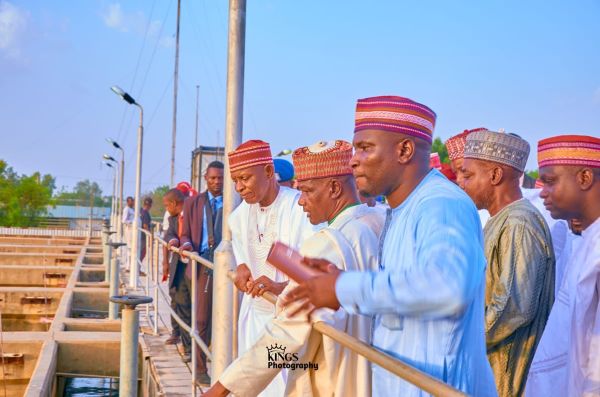Kano Revives Colonial-Era 95-Year Water Plant in $3.5m Push to Solve Urban Water Crisis

In a strategic move that blends heritage restoration with urban utility reform, the Kano State Government has announced the reactivation of the historic Challawa Water Treatment Plant, a 95-year-old facility that once stood as the lifeblood of the city’s water infrastructure.
Commissioned in 1930 during the reign of Emir Abdullahi Bayero, the Challawa facility is not just Kano’s first water treatment plant—it is a relic of colonial-era civic planning and an enduring symbol of pre-independence infrastructure. For decades, it supplied up to 20 million cubic litres of potable water daily, servicing large swathes of the ancient city.
However, according to Alhaji Garba Bichi, Managing Director of the Kano State Water Board, the facility has been moribund for eight years, falling victim to administrative neglect and systemic decay during successive governments.
The Cost of Neglect: Infrastructure Vandalised, City Thirsts
In a tour of the facility, Bichi revealed that the plant’s abandonment created a vacuum that emboldened vandals and looters. Critical components including raw water pumps, electrical starters, pipes, and other fittings were stripped from the site, severely compromising its operational integrity.
The consequences have been far-reaching: chronic water shortages in Kano city, rising costs for consumers relying on private boreholes and water vendors, and pressure on health systems due to unsafe water sources.
Complementing Bichi’s remarks, Alhaji Haruna Doguwa, the Commissioner for Water Resources, pegged the reactivation cost of the 95-Year Water Plant at approximately $3.5 million (₦4.2 billion). He disclosed that procurement processes for the plant’s overhaul are already underway, with orders placed for new equipment.
Gwauron Dutse Tanks Also Vandalised
Doguwa also extended the government’s concerns to the Gwauron Dutse twin water tanks, strategically located atop a hill to provide water pressure to Kano’s elevation-challenged districts. Like Challawa, these tanks have not been spared from plunder—valves, ventilators, and pipe fittings have been stolen, worsening water distribution across the capital.
“The looting was systemic and devastating,” Doguwa noted. “We are racing against time to restore these assets and stabilize water flow in Kano metropolis.”
Context: A New Chapter in Urban Utility Governance
The reactivation of Challawa underscores a wider push by Governor Abba Kabir Yusuf’s administration to reposition Kano’s public utilities and address long-standing infrastructure deficits that hinder urban productivity and human development.
Kano, with a population exceeding 15 million, has long battled uneven access to clean water, exacerbated by rapid urbanisation, poor maintenance culture, and institutional mismanagement. Experts estimate that more than 60% of Kano residents lack reliable access to piped water—a crisis that fuels both health and socioeconomic disparities.
The revitalisation of Challawa, while symbolic, is also pragmatic. It brings existing infrastructure back into productive use and saves the government from the higher capital expenditure of building a new plant from scratch.
Strategic Implications
If properly implemented, this $3.5 million investment could:
- Improve water delivery efficiency to households and businesses.
- Reduce dependence on informal water vendors.
- Enhance sanitation and public health outcomes.
- Rebuild public trust in the state’s utility systems.
However, experts warn that infrastructure reactivation alone is not enough. Sustainable water governance, including operations management, tariff structuring, community engagement, and anti-vandalism enforcement, will be crucial to ensure the facility’s long-term viability.
For now, the reawakening of Challawa marks a significant step forward—and a potential model for other states grappling with legacy infrastructure and urban service delivery gaps.











